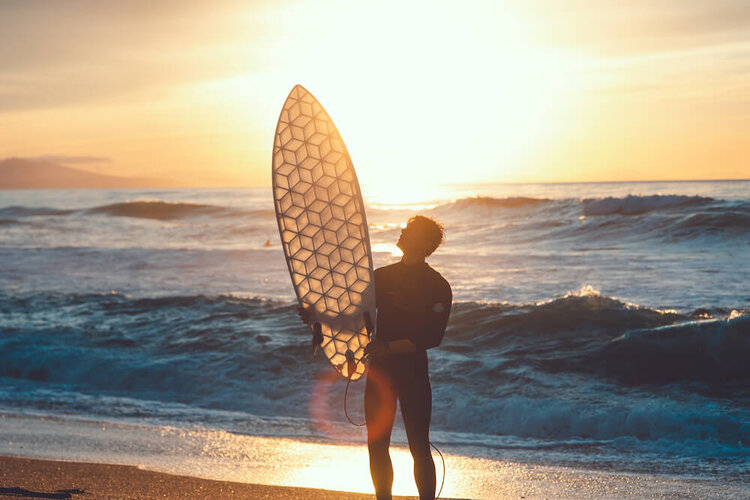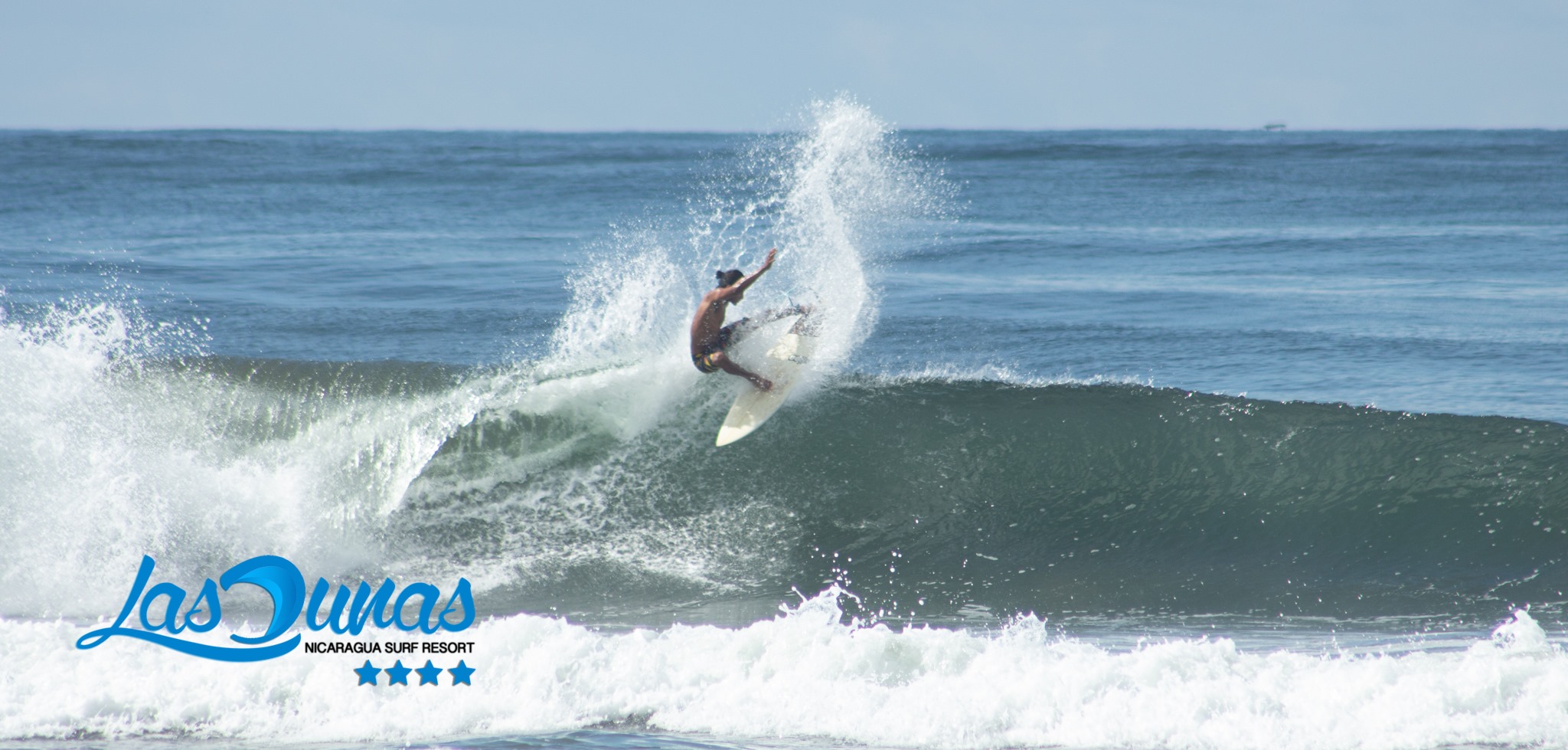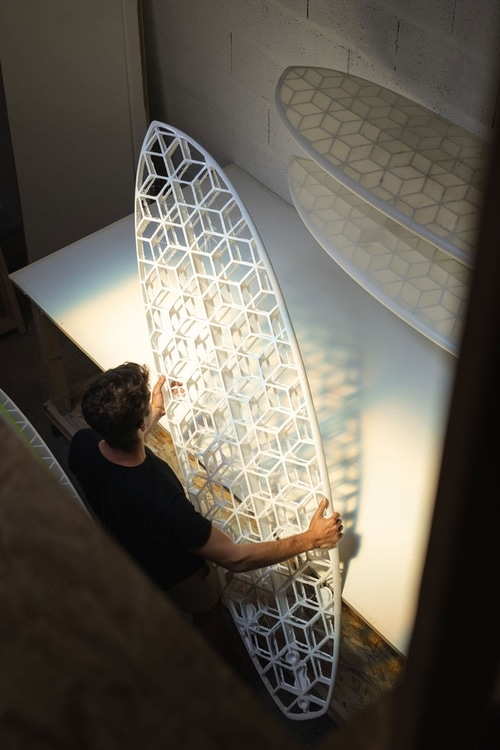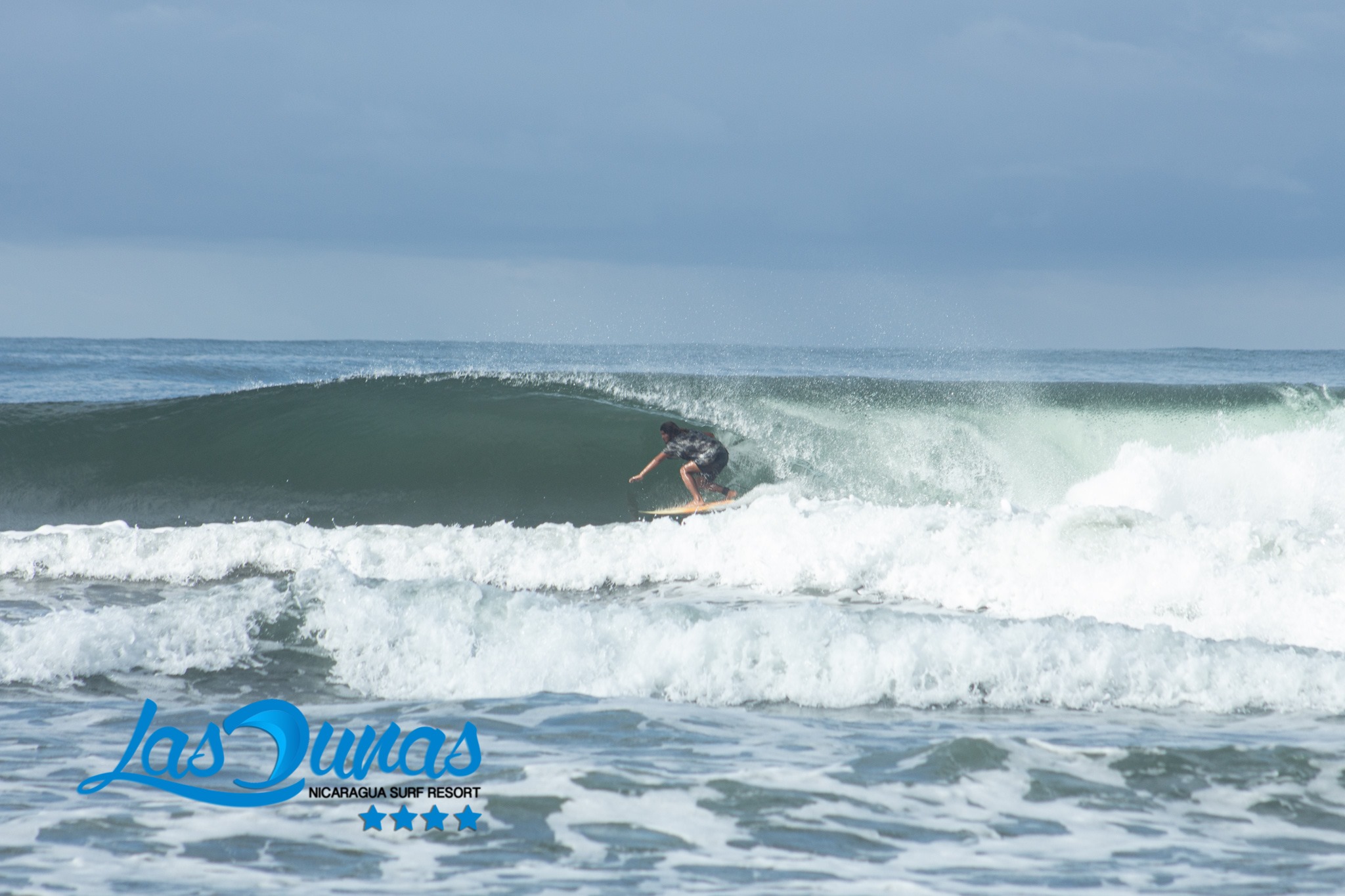
The 3D ecological surfboards created by WYVE are undoubtedly revolutionizing surfing in an eco-friendly way, we’ll talk about them a little more.
WYVE is a French starup that using 3D printing has managed to create more ecological surfboards, easily customizable and with a transparent design that makes them incredible.
The 3D Ecological surfboards
Surfing is a sport that unites man with nature, from Las Dunas Surf Resort Surfcamp ,we promote the responsible and ecological practice of surfing, a subject that all of us who live in this sport are interested in.

A more sustainable option to surf WYVE, aware of the global problem in terms of pollution, not only redesigned its production and distribution platform, moving production to the places where surfing is done, promoting local production.
Likewise, it uses recycled plastic waste to create the custom boards, where the honeycomb core of the boards has been 3D printed. This allows the efficient and conscious use of the material.
Surfers are getting greener
And it is that the international surfer community is increasingly concerned about the development of more ecological practices, and the creation of the boards is one of the most striking.
About 80% of the surfers interviewed by the WYVE group expressed concern for the future of the ocean and the climate.
The generations of young surfers are the main stakeholders in the development of eco-friendly improvements in surfing, as well as in the production of all the equipment used.
How much pollution does the production of a normal board emit?
According to WYVE, the components of a surfboard must travel at least 10,000 km around the world before being used. The boards are made up of 95% petrochemical materials and emit around 6kg of highly toxic and carcinogenic waste. All for a board of about 3kg.
How are the 3D ecological surfboards made?
An online questionnaire is carried out in the first place to collect the information on the personalization of the table. Then the shape (Dimension and curves) of the table are designed.

In 2nd place, the data passes to a personalization algorithm, it translates the measurement and sensation information into a unique and exclusive design. The digital file is valid and goes to the printing stage.
The 3rd step is to print the heart of the board, which is made with PLA, a material known to be of biological origin and easy to use in 3D printing. However, they are testing using 100% recycled PET from plastic waste from the ocean.
Why that honeycomb shape?
The printing process takes several dozen hours, but varies depending on the requested design. The honeycomb structure maximizes the resistance of the model, highlighting its transparent design.
An enamel of biological origin and fiberglass is used. All seeking to have a sustainable and ecologically responsible production system.
Why 3D printing?
Because it uses a precise and efficient parametric design, which reduces material waste. By printing in a layered overlay, just the right amount of material is used, ensuring that there is no toxic waste, as is the case with traditional board production.

3D printers can use a wide variety of materials, which translates into greener materials. Remember that traditional boards use polyurethane, which is not recyclable and emits toxic gases.
This project seeks to promote sustainability within the sport, as surfers we must be aware of the environmental impact that our practice produces.
Ideally, we start to improve our practices to start being more eco-friendly.

From Las Dunas Surf Resort we invite you to come to our facilities to live a wonderful experience with nature, we are located in Aposentillo, Nicaragua.
